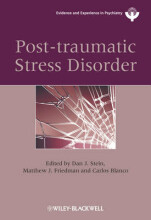Summary: Loss & Psychotrauma
- This + 400k other summaries
- A unique study and practice tool
- Never study anything twice again
- Get the grades you hope for
- 100% sure, 100% understanding
Read the summary and the most important questions on Loss & Psychotrauma
-
Grief: Introduction and scientific positioning
This is a preview. There are 10 more flashcards available for chapter 09/11/2015
Show more cards here -
What is grief according to Boelen, Stroebe and Schut?
Reactions to the death of a significant other -
What are post-traumatic reactions according to Kleber, Steijben and Berendsen?
Reactions to impactful event -
What do we do with death? Name the 4 given options from the class
Avoidance
Fascination
Normalisation
Commercialisation -
What is cryonic suspension?
A method with which you can let your body be freezed, until your death can be reversed -
Name an unnecessary problem that was caused by articles that were not evidence based?
The guy who thought he had to go trough a particular phase to get past his grief over his lost wife -
Give the working definition of grief that is given in the slides of HC1.
The primary emotional reaction to the death of a significant other (loved one). It is a complex emotional syndrome accompanied by physical changes and physical symptoms. In addition, it involves a wide range of possible cognitive and behavioural reactions. -
Name 4 dimensions of grief, given in HC1.
Emotional (sorrow, loneliness, numbness, anxiety, guilt, aggression)
Cognitive (loss of concentration, lowered self-esteem, confusion, hopelessness)
Physical (sleep-related problems, decreased appetite, stress headaches, tension, low energy, similar symptoms to the deceased)
Behavioural (agitated, withdrawn, seeking behaviour, avoidance) -
What is the grief task model of Worden (1999)?
1. Accepting the reality of the loss
2. Allowing yourself to experience the emotions
3. Adjusting to life without the deceased
4. Relocating the deceased emotionally and move on -
Why is there a grief working model?
Because grief is work -
Give three explanations for gender differences
Differences in
social support
coping strategies
types of bereavement
- Higher grades + faster learning
- Never study anything twice
- 100% sure, 100% understanding
































